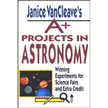 The Moon’s landscape causes shadows which creates a pattern. Some say the shadows form a shape like a person, thus they refer to the shadows as the “Man in the Moon.”
The Moon’s landscape causes shadows which creates a pattern. Some say the shadows form a shape like a person, thus they refer to the shadows as the “Man in the Moon.”
Observe the photo of the Moon shown. Do you see any particular shape formed by the shadows?
The shadows never looked like a man to me, instead I see a curled up rabbit. The rabbit’s ears are at the top–pointing toward the right in the picture. The rabbits body wraps around the lower left side of the moon.
Whether the shape looks like a man, a rabbit or what every shape you image is not important. But the shape can be used in the following activity.
Why does the moon- disk appear to turn during the night?
First of all, the full moon has a disk-shape (flat circular shape) as seen from Earth.
During the next full moon, make a point to observe the Moon at different times during the night. The full moon rises as the Su n sets. You best view of the moon will be after sunset.
n sets. You best view of the moon will be after sunset.
The full moon sets in the west at sunrise. If possible, make your last observation about an hour before sunrise.
What to Do!
PREPARE FOUR PAPER MOON-DISKS
1. Fold a sheet of white copy paper in half twice, first from side-to-side, and then from top to bottom.
2. Use a compass to draw the larges possible circle on the folded paper (about 3 1/2 in diameter).
3. Cut out the circle, cutting through all four layers of paper.
4. Draw the shadow shape that you see in the Moon. I’ve drawn a rabbit. Of course, since it is my imaginary Rabbit-in-the-Moon, I can add eyes and whiskers. The main thing is to have the top and bottom of the image in about the same place on the white disk as the shadows are on the moon-disk you see in the sky.
MOON OBSERVATION
 First observation:
First observation:
1. Write the time of this observation on one of the paper moon-disks previously prepared.
2. Place the moon-disk on the top left side of a black sheet of construction paper. Rotate the disk so that the shadows you see on the Moon and the drawing on the paper-disk are the same (close at least). Notice that the blue rabbit shown and the shadows in photo of the Moon are basically in the same place with respect to the sides of the paper.
For example: The diagram above shows two perpendicular lines across the center of each moon-disk. notice that the shadows on each disk are about in the same place in respect to the two lines. You don’t have to make measurement, use make a good ” guestimation” in placing the four paper disk.
Results: The disk appears to rotate clockwise.
 |
Janice VanCleave’s A+ Projects in Astronomy: Winning Experiments for Science Fairs and Extra Credit |